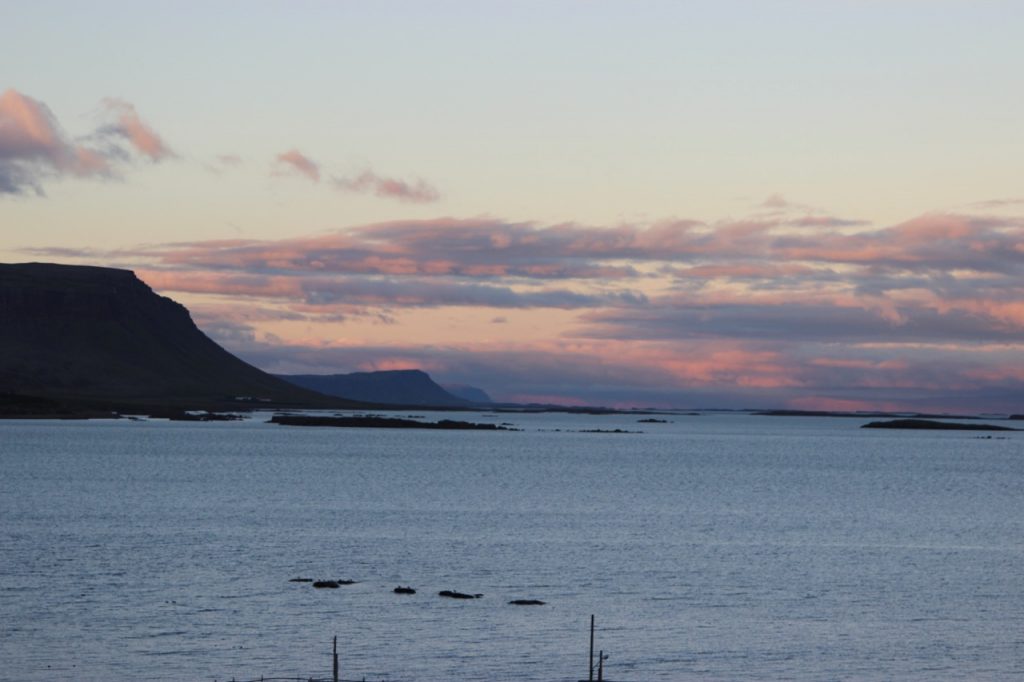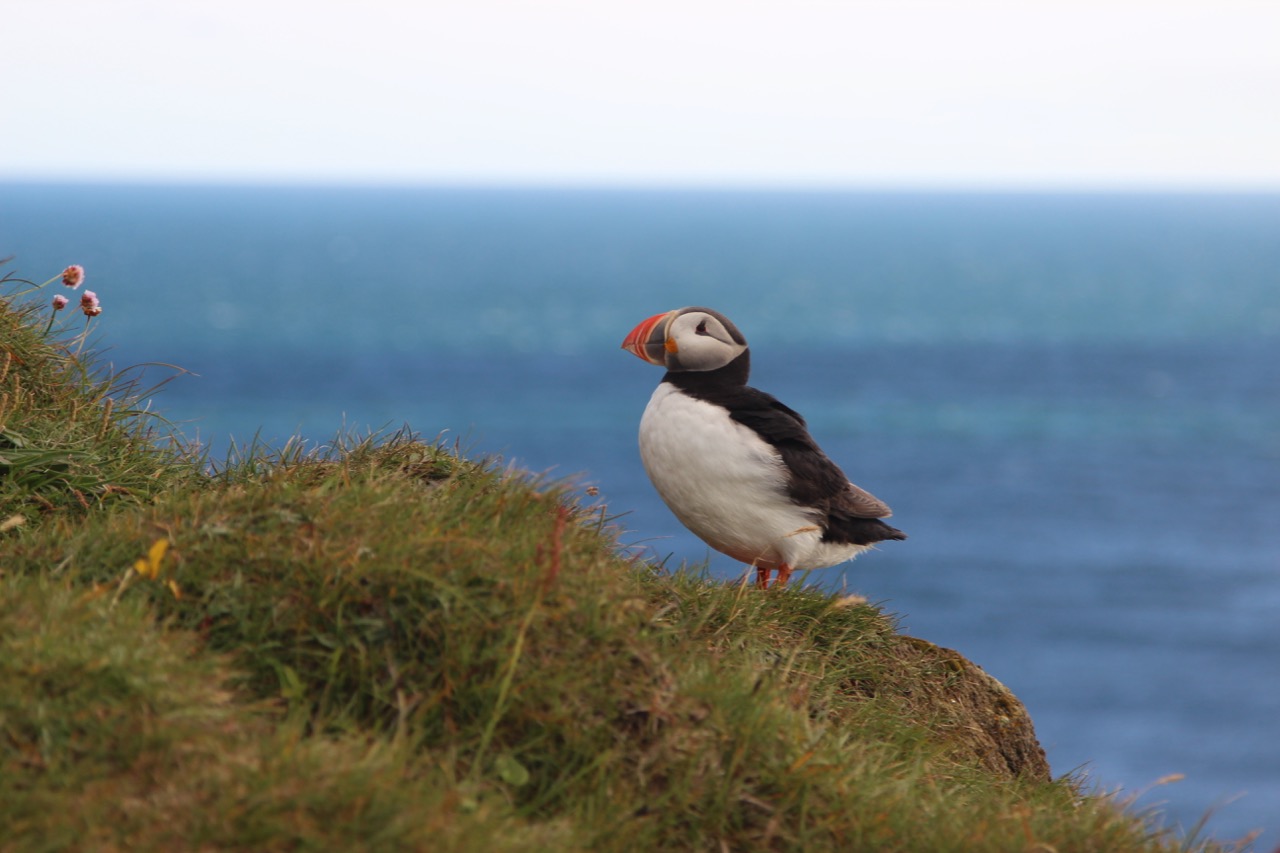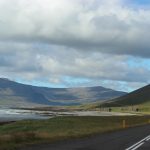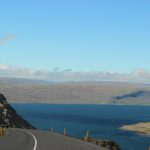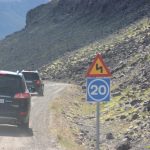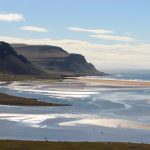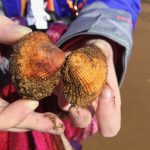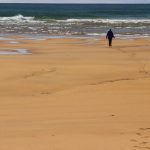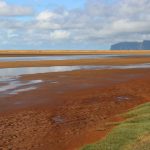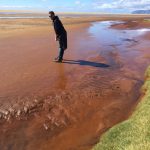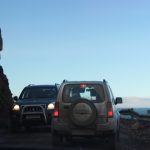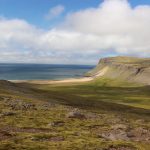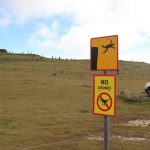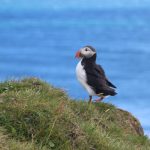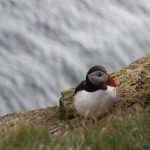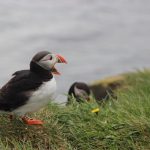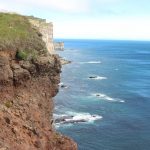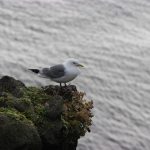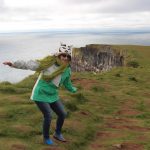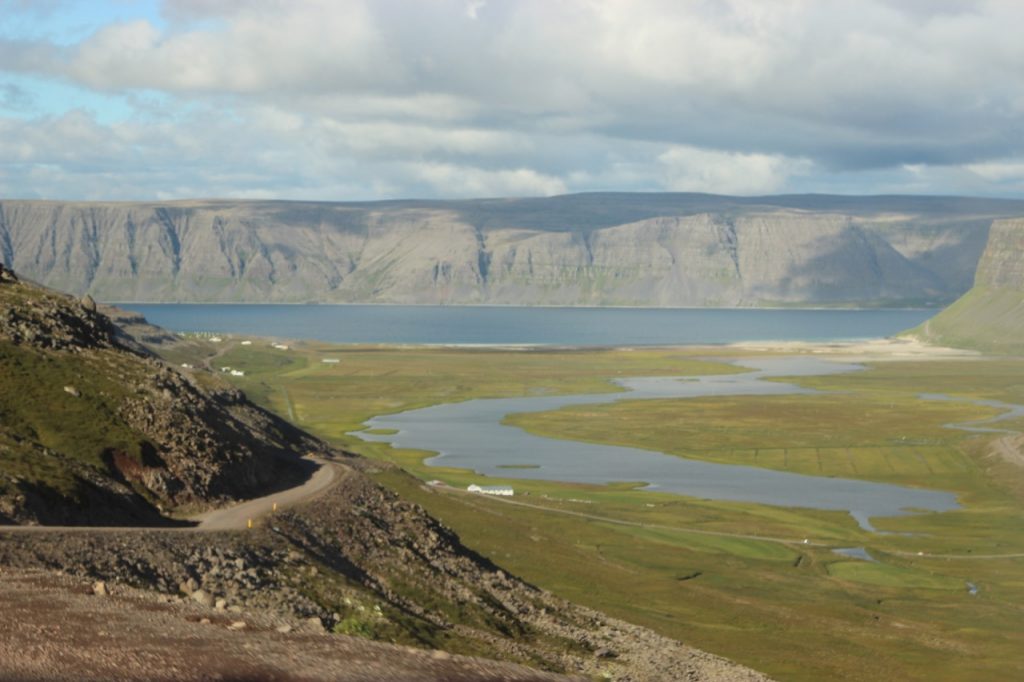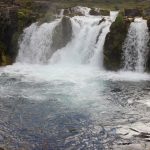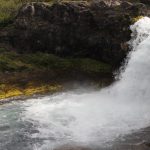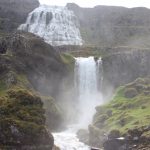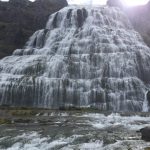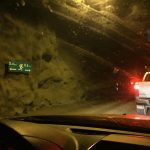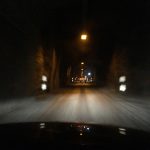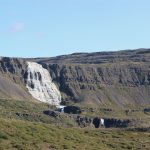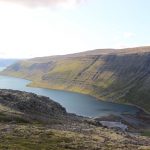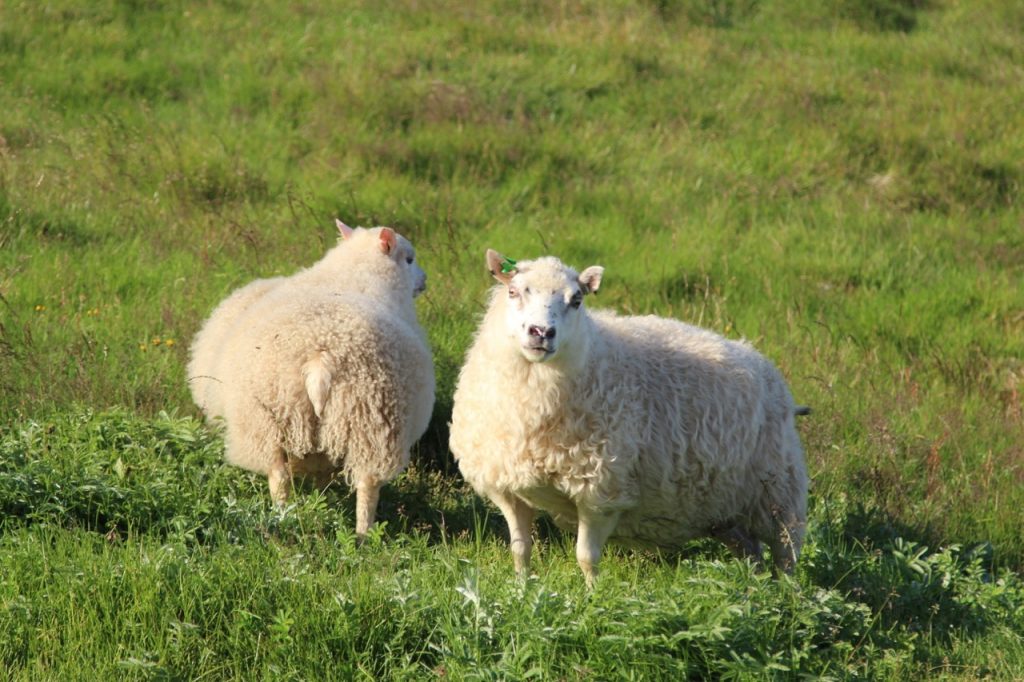The day after the birthday wettening, we set out for the Westfjords. They are remote, with grocery stores few and far between, and gas stations not as plentiful as everywhere else. Few tourists are in the Westfjords, so we were expecting peace and quiet.
We were going to take the ferry across because I had assumed we would have been lazy following our glacier hike. Well, we were still lazy, so we boarded the Ferry Baldur with the car and set out for the Westfjords. The ferry doesn’t save a ton of time, but we did see a bus and a semi hauling gas boarding the ferry. These big vehicles somehow fit inside, an inch away from all the other vehicles in the ferry. They pack the cars in tightly and entry into the car deck is strictly prohibited while the ferry is in motion.
Three hours and many card games later, we were in the Westfjords. Fortunately our ABB was very near the ferry, so we would be ideally located near our port of call. Except…we are very far from everywhere else. The nearest grocery store is an hour away on gravel roads in Patreksfjordur.
It was early, so we set out to explore the nearby red sand beach, famous for…red sand! The southern coast was very different from any other area of Iceland we’d seen, with sandy beaches stretching between fjords. We bumbled down a gravel road until we reached the beach, which was over a mountain pass offering stunning views (and at least it had a guardrail).
We wandered around the beach and we found a jellyfish, which we poked with a shoe to certify its jellyfish status.
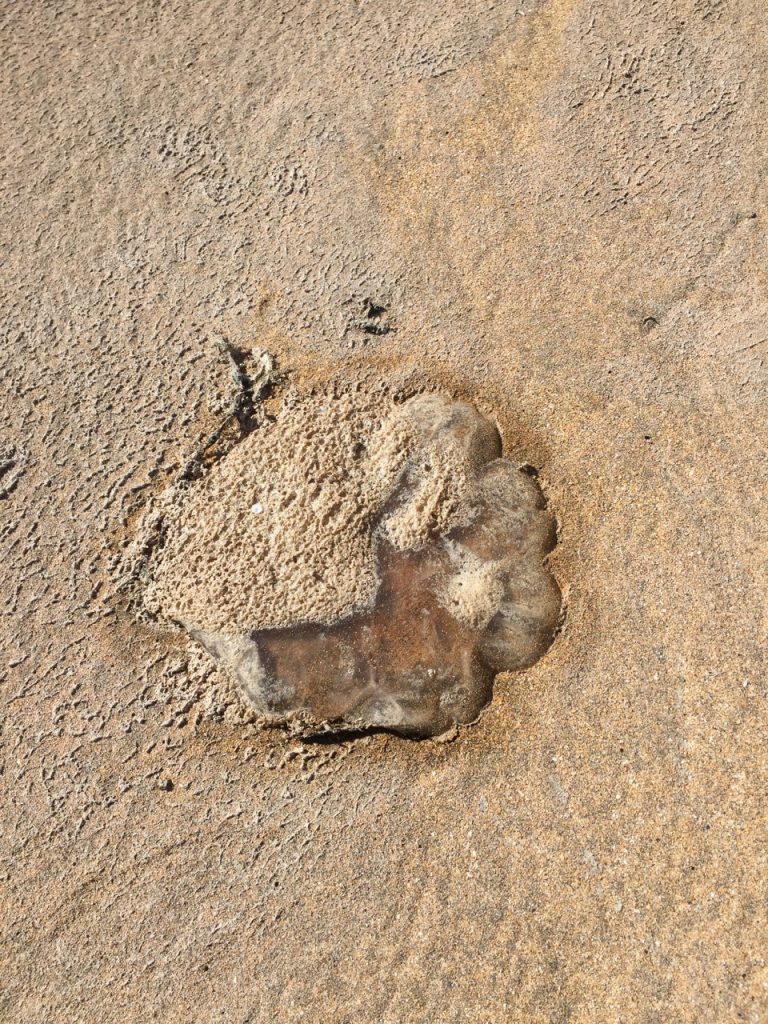
Parts of the beach were definitely red – and in other areas, the sand was a golden-reddish hue. It was very beautiful and quite peaceful.
From the beach, we went to the bird cliffs Látrabjarg, which we originally thought was two hours away but it was only one. Waze has been riding the struggle bus out here – it keeps thinking there is no place to turn around and has repeatedly guided me to the far end of dead-end gravel roads when we really just need to go back the way we have come. Fortunately, we realized the error of our ways early and went over to the other side of the fjord for bird cliffs!
These cliffs have been listed as many things in travel magazines: best view of the ocean, bird photography for dummies, best place to fall off a cliff, etc. The birds are really tame and do not care about the nearby humans. They spend all their time swooping around, pooping everywhere, and the puffins will actually hop up and get quite close to you. They nest in the cliffs, and there were warning signs posted everywhere telling you to not stand at the cliff edge lest you fall off due to loose soil.
The other less fabulous thing you realize about bird cliffs is, of course, the smell. The gulls were nesting up a ways from the puffins, in bird poop canyon. The strong winds blow up off the ocean, rocketing the bird poop smell right up your nostrils. The birds obviously do not mind the smell and love the winds, and we watched many of them swooping and playing on the breeze off the ocean.
Our birdy adventure done for the day, we returned to our home overlooking the fjord. There were sheep in our back yard, and I counted 11 before falling asleep for the night. It works!
On Thursday (if it really is Thursday, idk about days anymore), we planned to venture north to Súðavík to see the Arctic Fox Center (the only one!) and visit a waterfall on our way.
The roads north of us are almost entirely gravel. Some of it is nice gravel. Some of it is pothole city and cheese grater central. Almost all of it is better than Costa Rican gravel roads. We also learned that if you actually go 80 like the signs suggest you seem to be going too fast to hit some of the potholes so we did this exactly twice before thinking it was actually too fast.
Our roads took us up over a mountain. The top was just rocky wasteland with some of Iceland’s 600 types of mosses growing on it. We were pretty close to patches of snow. The mountain passes were steep switchbacks of gravel – but at least the turns were quite wide. These roads are only open in the summer. There is no way anyone could clear snow off of them in the winter without dying.
Dynjandifoss was our first stop. This waterfall was up in the top four waterfalls we had seen, cascading from the top into dramatic rivulets which got larger and larger as the falls neared the bottom. There were also many other falls you could visit as you walked up from the base of the falls, all of which had names. Signs mentioned that ruins of an old farm had been found nearby. Imagine your backyard being this waterfall! No need to live anywhere else…
From Dynjandifoss, we continued to our fjord and the foxes. The road was beautiful despite the steep gravel switchbacks. We hit paved roads after an hour of weaving past large vehicles, potholes, and sheepies. Before we hit civilization, we passed through a large tunnel, half of which was one-way with pull-off areas. The tunnel opened up to two-way traffic after the midpoint, though we were enjoying winning games of chicken.
Finally, our foxes! The arctic fox center is run by the people who also run the research station in Hornstrandir Nature Reserve to the north. They have two orphaned foxes out back, and a lot of informative displays about the life and times of the arctic fox, Iceland’s only native mammal (the rest were brought over by settlers).
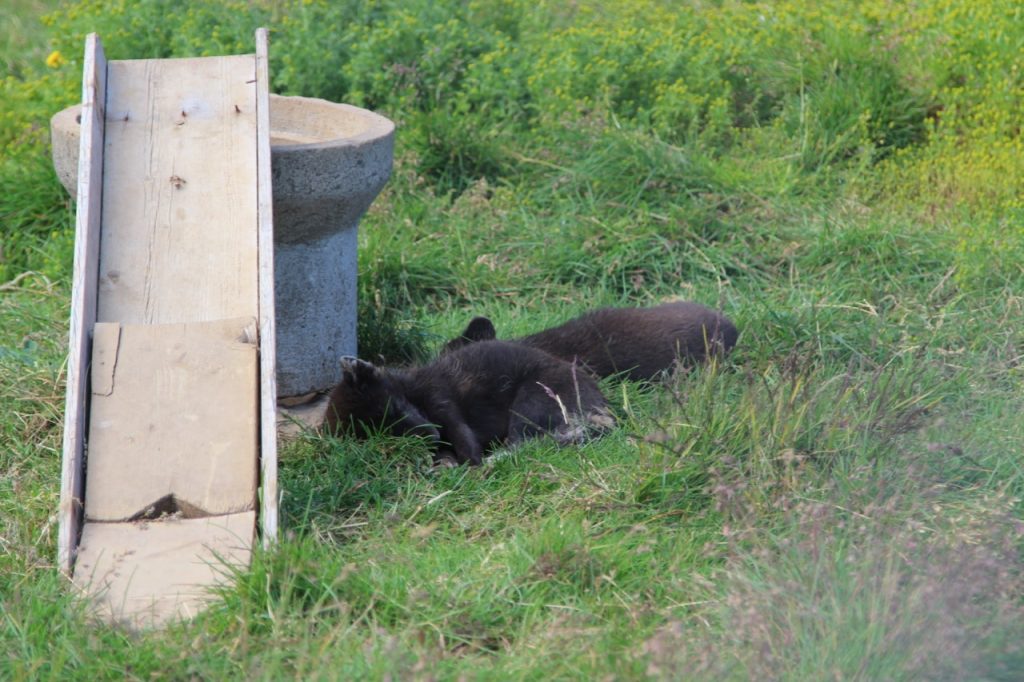
Fun Fox Facts:
- The white artic fox is more common in tundra areas, and the blue one (which is confusingly brown) is more common in coastal areas. Most of the icelandic arctic foxes are blue
- They have cute snoots
- Arctic foxes in other parts of the world have breeding cycles which following the lemming population swells, but the Icelandic fox eats birds and other prey that have a more stable population, so they breed yearly
- They can withstand temperatures of -70*C without shivering, due to their thick coats and a special circulatory system that keeps their extremities warm
- They were once hunted very heavily for their pelts, but demand dropped off after WWII and the population has been stable since
- They are soft!
We also finally found a grocery store, so we stocked up on waffle mix and dinner foods for our final evening.
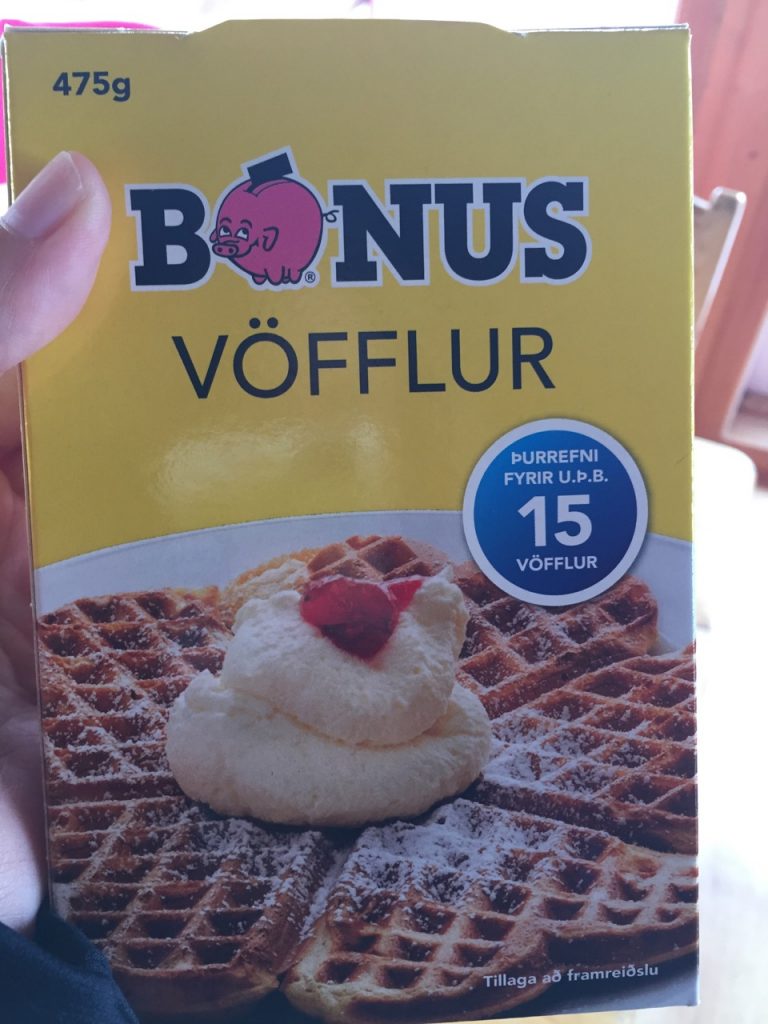
On the way back, we got some lovely views of Dynjandifoss from the opposite side of the fjord.
We made one last stop at a nearby pool, Hellulaug, which was just an open-air pool facing the ocean about 3km from our ABB. It was great! The water was the perfect temperature and it was piped in via a big black pipe that came out from on top of the pool.
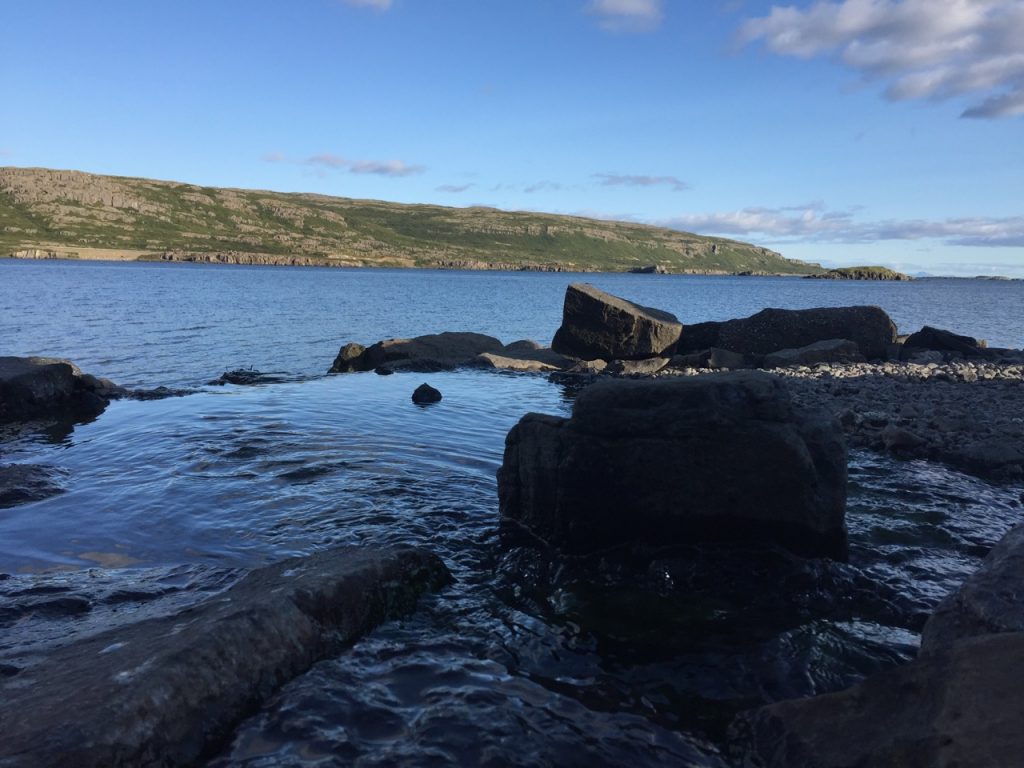
And the sheep in our backyard were near the house when we got home, to boot!
And the sun set over our lovely home in the westfjords. Tomorrow, we head back to Reykjavik for a few days before going home.
